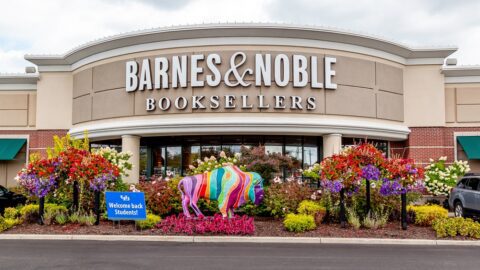Retailers might know how much of an item is sold using a store display versus how much is sold without the display, but until now, most retailers didn’t know how much more they could have sold if the display was located in the direct path of the right shoppers. With shopping path research, retailers can better target the right consumers with the right messaging, products, and store design.
With research in hand, retailers can throw out their old method of merchandising by assumption. The assumptions retailers make about shopper’ patterns are not always right, notes Peter Fader, Professor of Marketing at the Wharton School at the University of Pennsylvania. Rather than wondering why a shopper is staying in one place for a certain amount of time, or why a shopper overlooks a specific display, the research offers some insight into the behavior. Ultimately, retailers can benefit by strategizing with real information.
Fader has published a number of studies on shopper behavior, including his most recent work on the shopping paths in grocery stores. In the October 2007 paper “An Integrated Model of Grocery Store Shopping Path and Purchase Behavior,” the individual-level probability model captures three aspects of a typical consumer’s in-store behavior:
- Which zone she visits
- How long she stays in each zone
- What purchases she makes within that zone
“The research helps offer some diagnostics about items that are or aren’t selling well,” Fader says. To offer some insight into retailers’ top questions about shopper activity, the research breaks down each trip, step, and probability. “We can really say, scientifically — where they’ve been and what they’ve purchased.”
Fader recommends that retailers focus on three in-store elements:
- Messaging – With knowledge about which shopping zones are and are not generating traffic, retailers can create more effecting marketing messaging by targeting customers based on their behavior.
- Store Layout – Certain areas of the store sell certain products better than others. “This model can offer some guidance about which changes they ought to contemplate to get more bang for their buck,” says Fader.
- Overall Store Design – Consumers don’t travel “up and down the aisles” as much as some retailers think. “A lot of retailers are thinking about the ideal shopper of the 1950s who traveled up and down every aisle carefully shopping,” Fader says. Today, he says, “The number of aisles shoppers actually travel is very small.” By designing the store to reflect this behavior pattern of shoppers, retailers could create a smoother and more satisfying overall shopping experience.
Shopping Like a Traveling Salesman
A longer shopping experience is not necessarily a better one for today’s busy consumers, says Fader. He proves this premise in a research paper titled “The Traveling Salesman Goes Shopping: The Systematic Deviations of Grocery Paths from TSP-Optimality.”
TSP, or the traveling salesman problem, purports that each shopper wants to find the shortest path between themselves and the products they want to buy. “Retailers should be getting many of their shoppers in and out of the store as quickly as possible,” Fader notes.
But, Fader admits, shoppers vary and retailers need to recognize this fact. He separates shoppers into two groups: Efficient and Inefficient. Identifying which type of shoppers are in the store can help retailers develop a better strategy on how to market and promote to each.
- Efficient Shoppers are more like the traveling salesman and travel throughout the store in a specific sequence, picking items up based on location. Fader says to try to keep this shopper in the store longer may backfire.
- Inefficient Shoppers travel throughout the store in an unplanned sequence and typically have no specific shopping method. But there may be a strategy behind this type of non-pattern. “Sometimes the travel deviations are because they are engaged and are considering different items,” says Fader. “That kind of shopper is someone who might be more responsive to different kinds of messaging.”
Impulse buying can play a role for both the Efficient and Inefficient shopper, but Fader warns retailers against banking too much on impulse statistics. “Very often people are attributing things to impulse purchases just because it works that way,” he notes. “It’s a much more complicated process than we can measure and infer. Impulse buying is getting people to go where they wouldn’t have gone otherwise. It’s getting shoppers to consider a purchase when they thought they were just passing through, and buy extra stuff when they’re standing in a zone (even though they weren’t planning on buying in that category.)”
Peter Fader’s expertise is focused the analysis of behavioral data to understand and forecast customer shopping/purchasing activities. He works with a wide range of data sources from industries such as consumer packaged goods, e-commerce, and music (online and offline). Much of his research highlights the common behavioral patterns that exist across these and other seemingly different domains.
Fader frequently works with different companies and industry associations to improve managerial perspectives and practices in this regard. His work has been published in (and he serves on the editorial boards of) a number of leading journals in marketing, statistics, and the management sciences.
Posted on April 9, 2008












